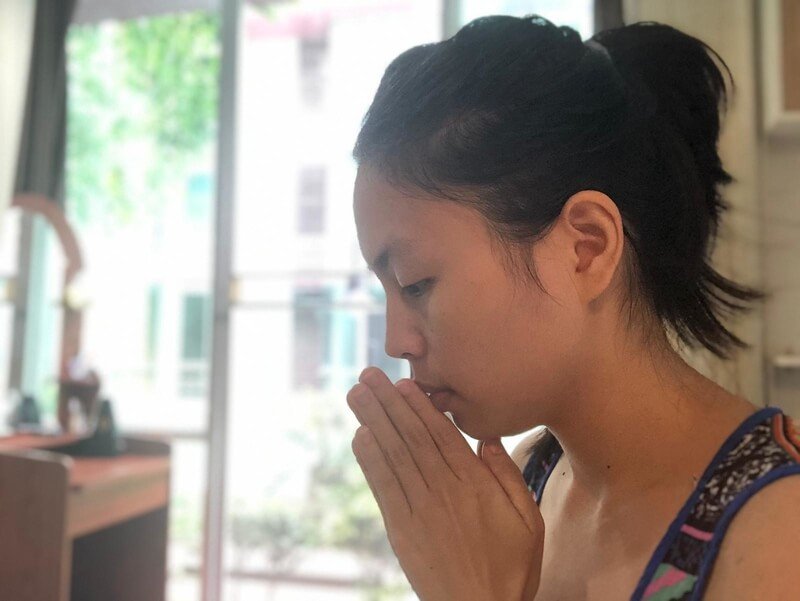If you have traveled in Thailand, you must have seen people greeting each other by putting their hands together (as if they were praying) and slightly bowing their head. This is called a Wai.
In this article, I will teach you what the Thai Wai (ไหว้) is, how to do it, and when to do it.
You can watch the video version below and also download the transcript for the video here.
What is the Thai Wai and how to perform it

The most common Thai Wai (ไหว้ wâai) is when you place your palms together (like a prayer), place your hands in front of your chest, close to your body, and slightly bow your head.
This is the Wai you will see most often in everyday situations such as greeting and saying thanks. As a foreigner, this is the one you should learn. But later in this article, you will learn about the other types of Wai.
Both men and women perform this Wai.
When to Wai
A common reason Thai people Wai is when greeting each other. While people in the west might be used to hugs, a kiss, or a handshake, in Thailand the most common thing to do is to Wai.
However, greeting people isn’t the only reason to Wai. Other reasons include
- To apologize
- To say Thank you
- To say goodbye
- In prayer
- Listening to monks
- Receive blessings
- Show and earn respect
Your status/age will also affect who will Wai first or if you even Wai at all. For example, a Monk won’t Wai back to you. A teacher won’t Wai his student but a student would Wai the teacher. An older person won’t Wai a child.
Tips on when to Wai
My advice for foreigners is to not think too much about it. If a person around your age or older does a Wai to you, Wai back. Or if you are greeting, asking forgiveness, thanking a person, you can perform a Wai.
As long as you do what everyone else is doing you will be fine.
Other types of Wai
These other types of Wai are used in order to pay a greater amount of respect and are broken down into 3 levels.
Level 1
The first level is the one that shows the most respect and it is used when worshiping monks, Buddha images, sacred relics, and places related to Buddhism.
You perform this wai by placing your palms together and raising your hands to your head. You bow your head so that your thumb is between your eyebrows and your fingertips are touching the top of the forehead.

Level 2
This level is to pay respect to elders and respected people such as grandparents, parents, teachers.
You perform this wai by placing your palms together and raising your hands to your face. You bow your head so that your thumb is on the tip of your nose and your fingertips are touching between your eyebrows.

Level 3
This level is to pay respect to people who are just a bit older than you and are respected.
You perform this Wai by placing your palms together and raising your hands to your face. You bow your head so that your thumb touches the tip of your chin and your fingertips touch your nose.

You should now know everything you need to know about the Thai Wai, when to Wai, and how it is done.

